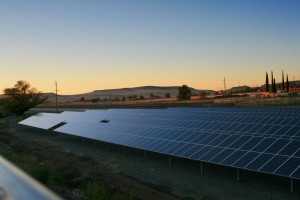California law requires this state’s investor owned utilities (IOUs) to file long term procurement plans (LTPPs) for their procurement of electricity over a ten-year forward-looking planning horizon. The central purpose of these plans is to ensure that the utility will be able to meet customer demand, with an adequate “reserve margin,” over the planning period. The plans themselves are filed, reviewed, and approved by the California Public Utilities Commission (CPUC) to avoid “after-the-fact” reasonableness review of the utility decisions and to ensure that utility procurement going forward meets specific criteria and incorporates state policy mandates, including greenhouse gas (GHG) emissions reduction and energy efficiency and Renewable Portfolio Standard (RPS) Program targets. Once these policies have been factored in, the plans identify what fossil generation may then be required to meet load or be held in reserve. The CPUC’s current LTPP rulemaking, R.10-05-006, is currently underway, with an all-important “Scoping Memo,” which will address both required and suggested scenarios for the utilities’ LTPPs, expected to be issued soon.
Obviously, California policies on procurement of electricity from generating facilities using renewable resources and their interconnection at either the transmission or distribution level play an important part in this planning process. While the California Legislature failed to pass a bill this year that would raise the minimum Renewable Portfolio Standard (RPS) to 33% by 2020, state agencies such as the California Air Resources Board (CARB) and the California Independent System Operator (CAISO), in compliance with AB32 and the Governor’s Executive Order, are moving ahead with plans to set that goal administratively, regardless of the final shape contained in any state legislation.
That still leaves a number of renewable energy unknowns facing the LTPP. A key issue is the amount of transmission that will be built to deliver electricity generated in the competitive renewable energy zones (CREZs). A transmission plan was developed by the Renewable Energy Transmission Initiative (RETI), which was coordinated by CEERT under a contract with the California Energy Commission. Then the CPUC hired three different consulting firms to again review many of the underlying assumptions that went into the RETI plan and issued this report.
One RETI assumption that was changed by the CPUC was the elimination of a two-mile buffer to some of the CREZs. RETI had developed the buffer idea to appease environmentalists worried about impacts of renewable energy developments on sensitive habitats, such as the California poppy preserve in the Tehachapi Mountains, a prime wind resource area.
One of the main unknowns facing California’s future renewable energy supply is the role that solar photovoltaics (PV) will play. In the past PV was primarily a distributed generation (DG) technology typically installed “behind-the-meter,” however rapid cost reductions and the ability to quickly build projects has many experts suggesting that large scale installations of this modular technology will play a much larger role than previously estimated.

Solar PV panels near Lake Oroville at Dusk
Due to permitting delays and lags in construction of new transmission lines for big Concentrated Solar Power (CSP) plants in the desert, an analysis was performed to see how much DG could be added to the grid without new transmission upgrades. All told, the analysis showed from 5,000 to 10,000 MW of solar PV could be added to the state’s portfolio in a relatively short amount of time. This could easily accommodate the 1,800 to 3,000 MW solar PV estimated to be installed under the California Solar Initiative (CSI) by 2016.
Out-of-state renewable energy development also presents unknowns to the RETI blue print for the state’s renewable energy future. Some question whether the energy from these resources would actually be delivered to California as a “bundled” product, inclusive of both the energy and the “renewable energy credit” (REC), a certificate verifying that 1 MWhr of electricity was generated from a renewable energy resource, thus requiring physical transmission, or whether the REC would be sold to a California utility either separate from the energy or with the energy delivered into another jurisdiction first.
Obviously, the LTPPs must be developed in a manner that accounts for these uncertainties. Thus, while core scenarios are a first step in that planning process, it must also include sensitivity analyses that will infuse the LTPP with sufficient flexibility to reflect these uncertainties. For CEERT, a starting point is to plan for a system that encourages full development of our renewable energy resources over the next ten years in a manner that can be adapted to real world experience. That is what California has been good at doing in the past, and what its role as a technology incubator demands


